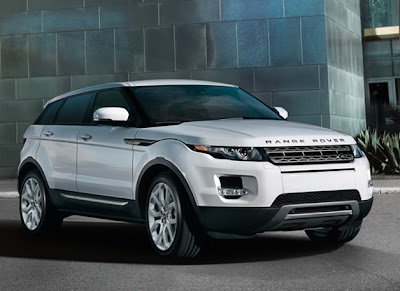
It was terrifying to learn that Range Rover had been purchased by Tata Motors and many car enthusiasts expressed their discontent opinions on the Indian manufacturer's ability to maintain the land roving legacy. Was this the end of the 4X4 marque? Certainly not, and the new model for 2013 has eased their hearts and restored confidence in the epitome of a grand SUV.
Improved design, less weight
Aluminium is used extensively in the car's construction of the space-frame chassis, replacing steel in several areas. In fact it is the first time an SUV has an entire chassis made of aluminium (uni-body construction of course) and the result was a remarkable weight loss of 500 pounds. The 2013 Range Rover is also a bit longer than the previous model and the air vents, which are no longer functional, have been moved to the door for increased mainstream appeal.
Handling
The car's steering input is now relayed more sharply to the front axle where the grip is reassuring, response is immediate and body roll is minimal. Needless to say, like in the Range Rover Evoque, the coil springs of conventional SUVs have been replaced by magneto-rheological dampers and air suspension that offer graceful cornering abilities. The 2013 model's transmission is an automatic 8-speed ZF and available engines are: 3.0L V6, 4.4L TDV8 and a 5.0L supercharged.
Superb off-roader
Some people would call it the most capable car in its class, and they would not be entirely wrong particularly in regard to the Hill Descent Control (HDC) where in the face of a steep descent all you have to do is engage the function and relax your feet off the brake pedal. The Terrain Response II system that is only in the 2013 Range Rover is totally out-of-this-world. Actually, it's just the normal Terrain Response coupled with five pre-selected drive modes, but now with intelligence that adds to the vehicle's talents, the major competitor here being LX 570's Hill Crawl system that boasts of accelerator-free hill climbing as well as brake-free descending. Just below the bonnet are Queen Mary ducts that take in air for the intercoolers through upward facing ducts and take it through many twists and turns on the underside of the bonnet. This prevents water suction into the bonnet intakes and eventually into the intercooler, enabling deep water driving (up to bonnet-level) without employing the use of a snorkel.
Interior
For luxurious appointments, the 2013 Range Rover exceeds all: entry is illuminated and the interior lighting can be changed through a variety of colours to best suit your mood. The leather is splendid on the dashboard next to a symmetrical wood grain and for the four-seater executive trim the centre console extends all the way to the rear where remotes are placed for the screens at the back of the front headrests, not forgetting that the remotes have screens too. All seats are heated and the front seats can move electronically in 20 different directions while massaging you in 5 different ways. At the top is a full-length sunroof that both the front and rear passengers can open independently, and sound is delivered




















